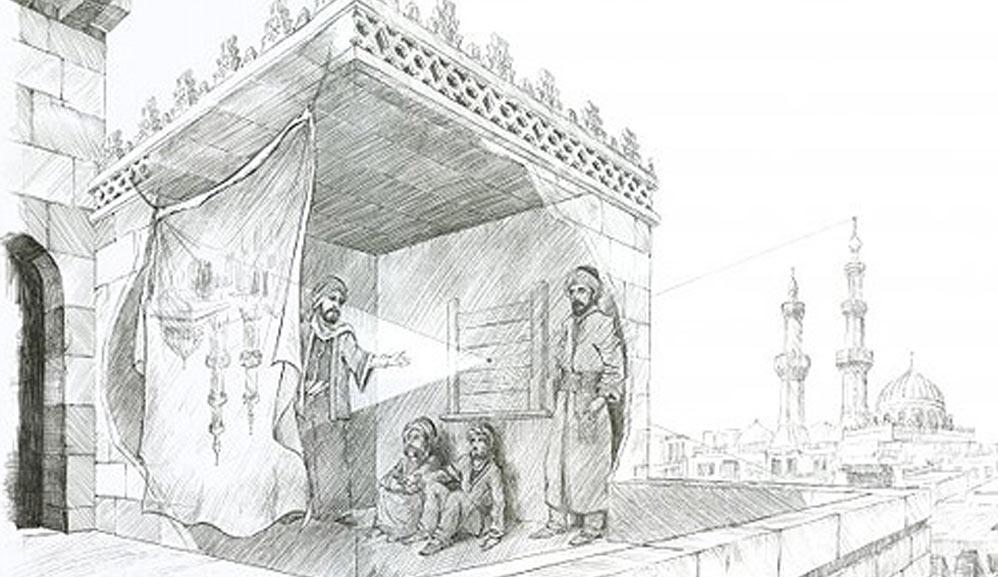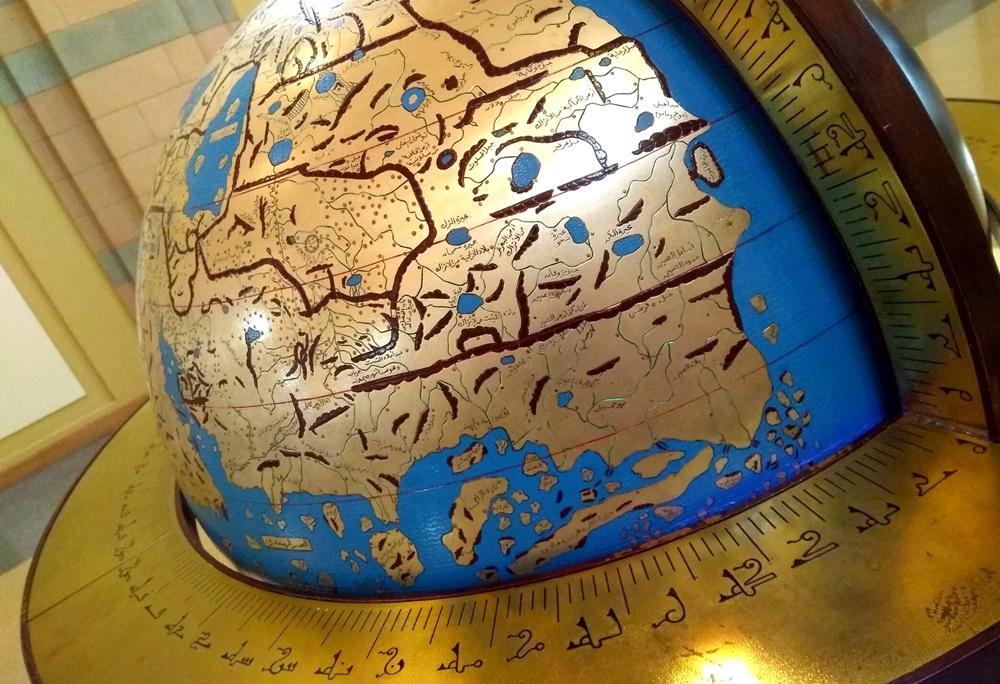Born around a thousand years ago in present day Iraq, Al-Hasan Ibn al-Haytham (known in the West by the Latinized form of his first name, initially “Alhacen” and later “Alhazen”) was a pioneering scientific thinker who made important contributions to the understanding of vision, optics and light. His methodology of investigation, in particular using experiments to verify theory, shows certain similarities to what later became known as the modern scientific method. Through his Book of Optics (Kitab al-Manazir) and its Latin translation (De Aspectibus), his ideas influenced European scholars including those of the European Renaissance. Today, many consider him a pivotal figure in the history of optics and call him the “father of modern optics.”
Ibn al-Haytham was born during a creative period known as the golden age of Muslim civilization that saw many fascinating advances in science, technology and medicine. In the Muslim world, which spread from Spain to China, inspirational men and women of different backgrounds built upon the knowledge of ancient civilizations and made discoveries that have had a huge and often underappreciated impact on our world.
His Life
Abu Ali al Hasan ibn al-Haytham was born in 965 in the city of Basra in Southern Iraq. He was educated in Basra and Baghdad, and died at the age of 74 in Cairo, Egypt in the year 1040.
Ibn al-Haytham grew up at a time when schools and libraries flourished in the Muslim civilization. Students had access to highly trained scholars who could teach a variety of subjects, including law, literature, medicine, mathematics, geography, history and art. Debates and discourses were popular and took place in Arabic. Scholars enjoyed discussing ideas from newly translated ancient manuscripts.
Initially, Ibn al-Haytham was trained for a civil service job and was appointed as a judge for Basra. But later he decided to dedicate his time and effort to the study of science. His knowledge in mathematics and physics became legendary and he became well known in Iraq, Syria and Egypt.
He was invited by Al-Hakim bi-Amr Allah, the Fatimid Caliph of Egypt to help in regulating the flow of the Nile during the floods. Al-Hakim, a Shiite of the Ismaili sect, was known to be an eccentric ruler who issued several arbitrary edicts and laws, prohibiting the consumption of certain foods, preventing women from leaving their homes, killing all the dogs, and forcing people to work during the night and rest by day. He was quite brutal and had killed his tutors and ministers on a whim.
When Ibn al-Haytham realized in his field work along the Nile that his scheme to regulate the Nile’s water flow by building a dam south of Aswan was impractical, he feared for his life. To avoid the potential of the deadly wrath and anger of his temperamental and mentally unstable patron, he faked insanity. He was stripped of his possessions and books, and was kept under house arrest for about 10 years until the time of Al-Hakim’s mysterious death in 1021.
It was during his period of imprisonment that he wrote his influential “Kitab Al Manazer” or the Book of Optic which has been ranked alongside Isaac Newton’s Philosophiae Naturalis Principia Mathematica as one of the most influential books ever written in physics which drastically transformed the understanding of light and vision.
His Work
Ibn al-Haytham’s discoveries in optics and vision overturned centuries of misunderstanding. Different views about how the process of vision could be explained had been in circulation for centuries mainly among classical Greek thinkers. Some said rays came out of the eyes, while others thought something entered the eyes to represent an object.
But it was the 11th-century scientist Ibn al-Haytham who undertook a systematic critique of these ideas about vision in order to demonstrate by both reason and experiment that light was a crucial, and independent, part of the visual process. He thus concluded that vision would only take place when a light ray issued from a luminous source or was reflected from such a source before it entered the eye.
He also realized that light entering the eye was only the first step in seeing. He built on the work of Greek physician Galen who had provided a detailed description of the eye and the optic pathways. Today the oldest-known drawing of the nervous system is from Ibn al-Haytham’s Book of Optics, in which the eyes and optic nerves are illustrated.
Ibn al-Haytham is also credited with explaining the nature of light and vision, through using a dark chamber he called “Albeit Almuzlim”, which was translated in Latin as “camera obscura”; the device that forms the basis of photography.
Ibn al-Haytham made a thorough examination of the passage of light through various media and discovered the laws of refraction. He also carried out the first experiments on the dispersion of light into its constituent colors. He dealt at length with the theory of various physical phenomena like shadows, eclipses, the rainbow, and speculated on the physical nature of light.
Ibn al-Haytham developed rigorous methods of controlled scientific testing to verify theoretical hypotheses. His scientific method was very similar to the modern scientific method and consisted of a repeating cycle of observation, hypothesis, experimentation, and the need for independent verification. Up until then, the study of physical phenomena had been an abstract activity with occasional experiments.
His Books
Out of the 96 books he is recorded to have written; only 55 are known to have survived.
Latin translations of some of his works are known to have influenced important Medieval and European Renaissance thinkers like Roger Bacon, René Descartes and Christian Huygens, who knew him as “Alhazen”. The crater Alhazen on the Moon is named in his honour, as is the asteroid 59239 Alhazen.
Ibn al-Haytham is known to have said:
“If learning the truth is the scientist’s goal… then he must make himself the enemy of all that he reads.” By this he meant it was essential to conduct experiments to test what was written rather than blindly accepting them as the truth.
Limited free articles. Subscribe for full access.








 Dr. Bilal Philips
Dr. Bilal Philips